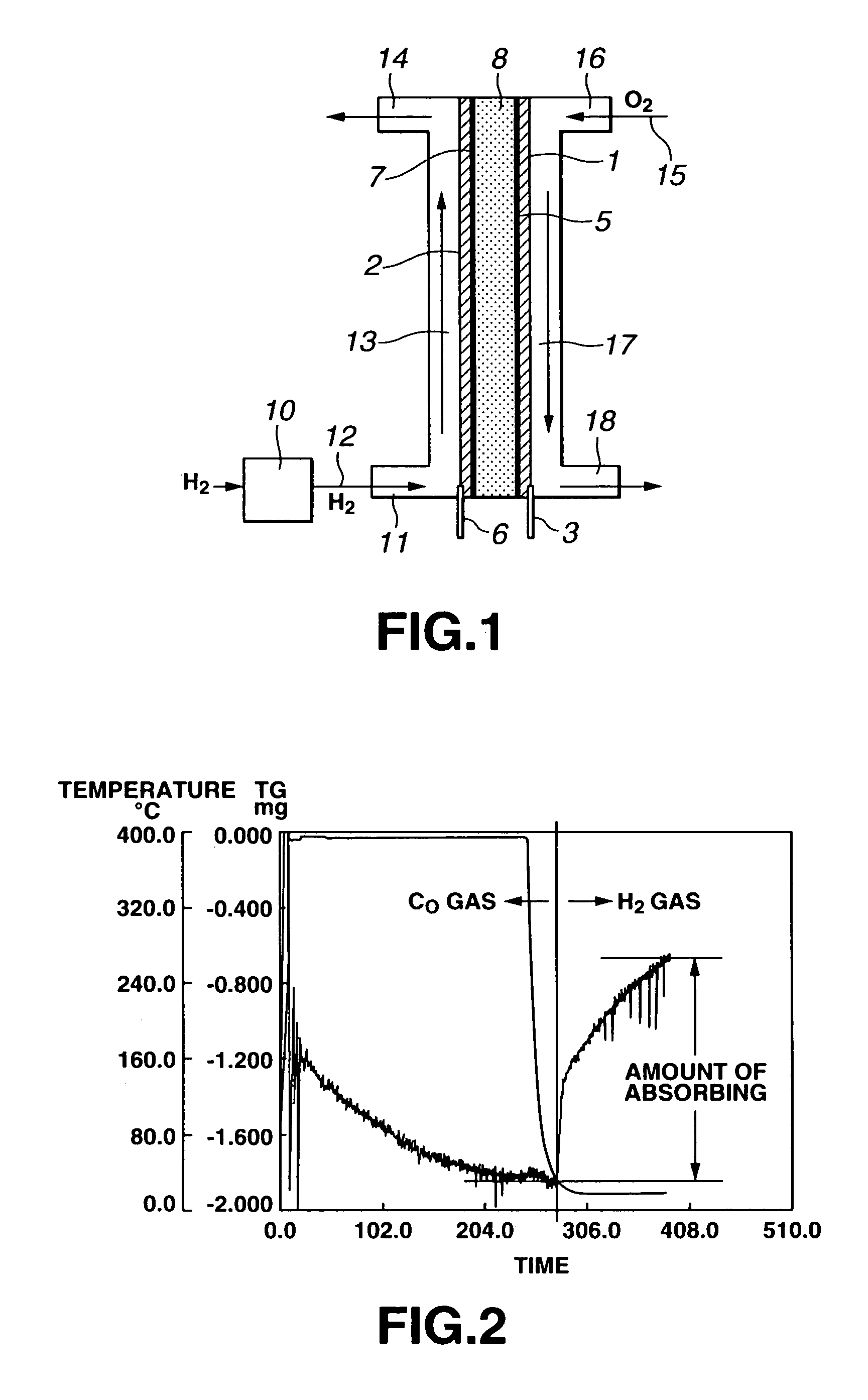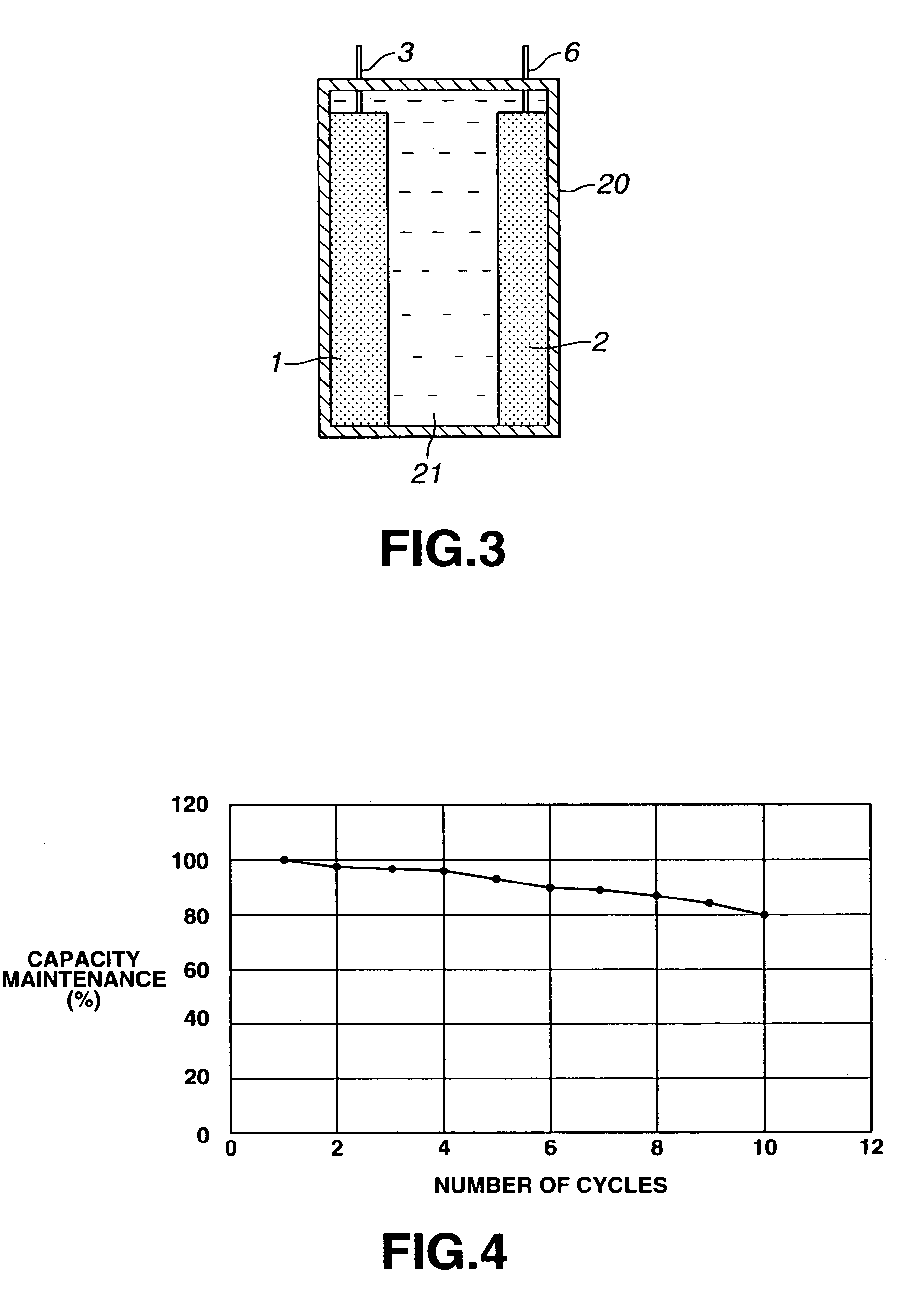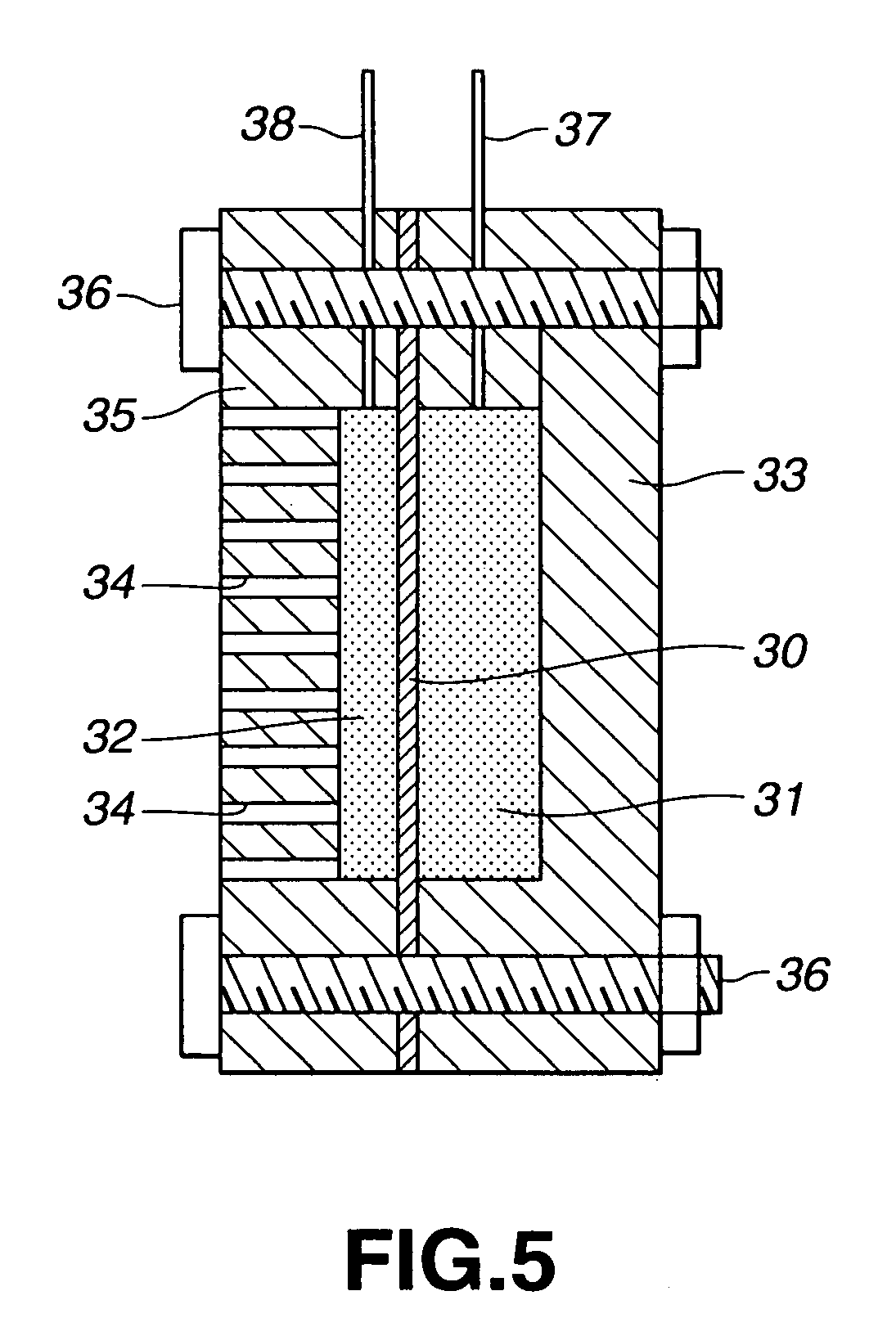Hydrogen-storing carbonaceous material and method for producing the same, hydrogen-stored carbonaceous material and method for producing the same and battery and fuel cell using hydrogen-stored carbonaceous material
a carbonaceous material and hydrogen-storing technology, applied in the direction of nickel accumulators, cell components, other chemical processes, etc., can solve the problems of affecting the quality of carbonaceous materials, so as to improve the hydrogen-storing capability of carbonaceous materials, the effect of cleaning the surface of carbonaceous materials and efficiently removing impurities
- Summary
- Abstract
- Description
- Claims
- Application Information
AI Technical Summary
Benefits of technology
Problems solved by technology
Method used
Image
Examples
example 1
[0050]A carbon nanofiber with one nanotube fiber whose diameter is about 200 mm was manufactured by a CVD method and impurities such as a catalyst were effectively removed until purity became 95% or higher before a thermobalance measurement was carried out.
[0051]The carbon nanofiber of 15.4 mg thus obtained was accommodated in a sample cup in a thermobalance, and then, initially, the contents in a measurement vessel were effectively replaced by using carbon monoxide gas.
[0052]Then, while the carbon monoxide gas of 1 atmospheric pressure was introduced into the measurement vessel at a flow velocity of 100 cc per minute, the carbon nanofiber was heated up to 400° C. at a rate of 60° C. per minute and maintained at 400° C. for 3 hours to clean the carbon nanofiber by the carbon monoxide gas.
[0053]After the cleaning process by the carbon monoxide gas, the carbon nanofiber was cooled to 20° C. After it was recognized that the temperature of the carbon nanofiber reached 20° C., hydrogen g...
example 2
[0058]After a carbon nanofiber was cleaned by carbon monoxide gas in the absolutely same manner as that of the Example 1 except that while the carbon monoxide gas of 1 atmospheric pressure was introduced into the measurement vessel at a flow velocity of 100 cc per minute, the carbon nanofiber was heated up to 200° C. at a rate of 60° C. per minute and held at 200° C. for 3 hours to clean the carbon nanofiber by the carbon monoxide gas, the carbon nanofiber was cooled to 20° C. After it was recognized that the temperature of the carbon nanofiber reached 20 C., hydrogen gas was introduced to the measurement vessel to measure the change of the mass of the carbon nanofiber.
[0059]In such a manner, when the amount of stored hydrogen in the carbon nanofiber was obtained, it was found that hydrogen of 2.4 wt % was stored in the carbon nanofiber.
example 3
[0060]After a carbon nanofiber was cleaned by carbon monoxide gas in the effectively the same manner as that of the Example 1 except that while the carbon monoxide gas of 1 atmospheric pressure was introduced into the measurement vessel at a flow velocity of 100 cc per minute, the carbon nanofiber was heated up to 800° C. at a rate of 60° C. per minute and held at 800° C. for 3 hours to clean the carbon nanofiber by the carbon monoxide gas, the carbon nanofiber was cooled to 20° C. After it was recognized that the temperature of the carbon nanofiber reached 20° C., hydrogen gas was introduced to the measurement vessel to measure the change of the mass of the carbon nanofiber.
[0061]In such a manner, when the amount of stored hydrogen in the carbon nanofiber was obtained, it was found that hydrogen of 3.5 wt % was stored in the carbon nanofiber.
PUM
| Property | Measurement | Unit |
|---|---|---|
| temperature | aaaaa | aaaaa |
| density | aaaaa | aaaaa |
| storage density | aaaaa | aaaaa |
Abstract
Description
Claims
Application Information
 Login to View More
Login to View More - R&D
- Intellectual Property
- Life Sciences
- Materials
- Tech Scout
- Unparalleled Data Quality
- Higher Quality Content
- 60% Fewer Hallucinations
Browse by: Latest US Patents, China's latest patents, Technical Efficacy Thesaurus, Application Domain, Technology Topic, Popular Technical Reports.
© 2025 PatSnap. All rights reserved.Legal|Privacy policy|Modern Slavery Act Transparency Statement|Sitemap|About US| Contact US: help@patsnap.com



